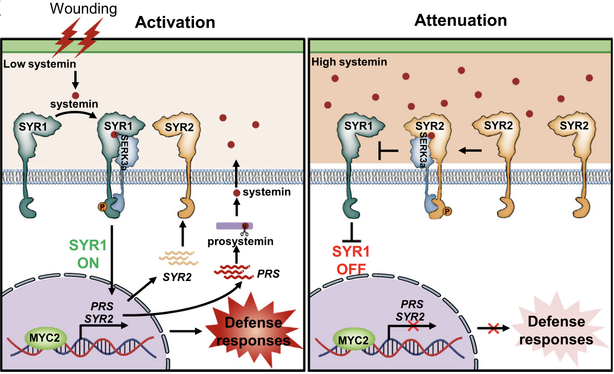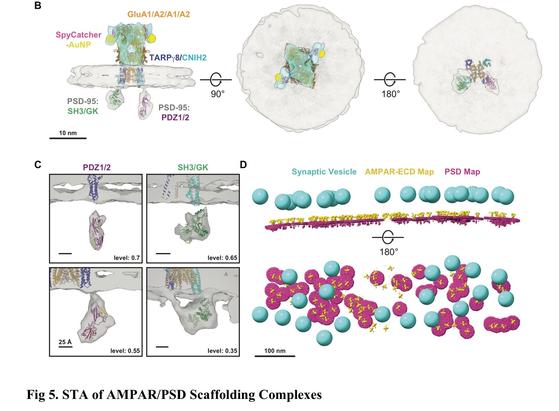Pregnant Dairy #Heifers Express #Influenza A Virus #Receptors in the Mammary #Gland, https://etidiohnew.blogspot.com/2025/05/pregnant-dairy-heifers-express.html
#Receptors
#Bovine #H5N1 binds poorly to #human-type sialic acid #receptors, https://etidiohnew.blogspot.com/2025/04/bovine-h5n1-binds-poorly-to-human-type.html
The Q226L #mutation can convert a highly pathogenic #H5 2.3.4.4e virus to bind #human-type #receptors, https://etidiohnew.blogspot.com/2025/04/the-q226l-mutation-can-convert-highly.html
Mushroom A.stiptica Bitter Compounds and Human Taste Receptor Activation
https://pubs.acs.org/doi/10.1021/acs.jafc.4c12651
#HackerNews #Mushrooms #Taste #Receptors #Bitter #Compounds #Human #Biology #Research
🫀 Sweet taste receptors in the heart: A new pathway for cardiac regulation
https://medicalxpress.com/news/2025-02-sweet-receptors-heart-pathway-cardiac.html
''all five isolates harbored HA #markers (226Q and 228G), suggesting more efficient #binding to avian receptors than to human #receptors, while all five strains had amino acid #substitutions that included 133A and 156A which might increase binding affinity to human-like receptors''
The Q226L #mutation can convert a highly pathogenic #H5 2.3.4.4e virus to #bind #human-type #receptors, https://etidiohnew.blogspot.com/2025/01/the-q226l-mutation-can-convert-highly.html
The two #systemin #peptide #receptors in tomatoes have opposite functions. While SYR1 activates systemin-induced #immune responses, SYR2 acts as an antagonist. Wounding preferentially induces the expression of SYR2 that attenuates immune responses by outcompeting SYR1 for binding with the co-receptor SERK3a
https://www.cell.com/action/showPdf?pii=S1534-5807%2824%2900670-1
Did you know our papers pdfs each have their own individual covers?
Recap of some of our wonderful covers of 2024!
check out
Androgen #Receptors in the Dermal Glands of Male and Female Ouachita Dusky #Salamanders
Gunelson,Tuong, Staub
A single #mutation in #bovine #influenza #H5N1 #hemagglutinin switches specificity to #human #receptors
Source: Science, Editor’s summary In 2021, a highly pathogenic influenza H5N1 clade 2.3.4.4b virus was detected in North America that is capable of infecting a diversity of avian species, marine mammals, and humans. In 2024, clade 2.3.4.4b virus spread widely in dairy cattle in the US, causing a few mild human cases, but retaining specificity for avian receptors…
Pictures of AMPA receptors at synapses from Axel Brunger's lab. By averaging a lot of tomogram images, they could discern scaffolding molecules bound to the complexes.
These in situ images are lower resolution than purified protein, but retain the native organization and place the receptors somewhat at the side of vesicular docking sites.
https://www.biorxiv.org/content/10.1101/2024.10.19.619226v2
#synapses #neuroscience #CellularStructuralBiology #Receptors
The #mammary #glands of #cows abundantly display #receptors for circulating #avian #H5 viruses
Source: Journal of Virology, ABSTRACTInfluenza A viruses (IAVs) from the H5N1 2.3.4.4b clade are circulating in dairy farms in the USA.; ruminants were presumed not to be hosts for IAVs. Previously, IAV-positive mammalian species were hunters and scavengers, possibly getting infected while feeding on infected birds. It is now recognized that H5N1 viruses that circulate in US…
"It seemed possible that the time course of the events might come well within the practical range of this method, and the results described in this paper have borne out this expectation."
Katz describing iontophoretic application of neurotransmitter to induce "inactive" desensitized states of a receptor in
A STUDY OF THE 'DESENSITIZATION' PRODUCED BY ACETYLCHOLINE AT THE MOTOR END-PLATE
Katz and Thesleff, 1957
#Avian and #Human #Influenza A Virus #Receptors in #Bovine #Mammary #Gland, Emerg Infect Dis.: https://wwwnc.cdc.gov/eid/article/30/9/24-0696_article
An outbreak of influenza A (#H5N1) virus was detected in dairy cows in the #USA. We detected influenza A virus #sialic acid -α2,3/α2,6-galactose host receptors in bovine mammary glands by lectin histochemistry. Our results provide a rationale for the high levels of H5N1 virus in #milk from infected cows.
#Bovine #H5N1 #influenza virus binds poorly to #human-type #sialic acid #receptors, BioRxIV: https://www.biorxiv.org/content/10.1101/2024.08.01.606177v1
Using two different methods, we found that both of the 2.3.4.4b H5s bound efficiently to glycan receptors with terminally linked a2-3 sialic acid with no detectable binding to glycan receptors with terminally linked a2-6 sialic acid.
#Receptor #Binding Specificity of a #Bovine #H5N1 #Influenza Virus, BioRxIV: https://www.biorxiv.org/content/10.1101/2024.07.30.605893v1
We found that A/bovine/OH/B24OSU-432/2024 preferentially binds to #avian type #receptors (alpha2,3-sialosides). Sequence alignments showed that A/bovine has maintained aa in its HA associated with alpha2,3-sialoside (avian) specificity. We conclude that while we find no evidence that A/bovine has acquired human virus RB specificity, ongoing efforts must be placed on monitoring for this trait.
#Cell #binding, uptake and #infection of #influenza A virus using recombinant #antibody-based #receptors. http://biorxiv.org/cgi/content/short/2024.07.29.605726v1?rss=1
#Human and #avian influenza A viruses bind to #sialic acid (Sia) receptors on cells as their primary receptors, and this results in endocytic uptake of the virus.
#Haemagglutinin #Genes of #UK Clade 2.3.4.4b #H5N1 Avian #Influenza Viruses from 2020-22 Retain Strong Avian #Phenotype, BioRxIV, https://www.biorxiv.org/content/10.1101/2024.07.09.602706v1
We evaluated a comprehensive panel of H5 viruses representing prevalent genotypes from UK outbreaks spanning 2020-22 for HA functionality. Viruses only bound to avian #receptors & exhibited fusion at a pH of 5.8, above pH range (pH 5.0 to 5.5) associated w/ efficient h2h transmission. These H5 viruses have low immediate zoonotic threat.
Technical #Report: Highly Pathogenic Avian #Influenza A(#H5N1) Viruses, #US #CDC, June 5 2024 Update: https://www.cdc.gov/flu/avianflu/spotlights/2023-2024/h5n1-technical-report-06052024.htm
Clade 2.3.4.4b HPAI A(H5N1) viruses currently circulating in wild #birds and #poultry worldwide lack the ability to preferentially bind to the types of sialic acid #receptors that are predominant in the upper respiratory tract of #humans and therefore do not currently have the ability to easily infect or transmit among people.
The mammary #glands of #cows abundantly display #receptors for circulating avian #H5 viruses, BioRxIV, https://www.biorxiv.org/content/10.1101/2024.05.24.595667v2
Most of the #sialome of the cow and #goat respiratory tract is lined with #sialic acid modifications such as N-glycolyl and O-acetyl, such structures are not bound by IAV.


